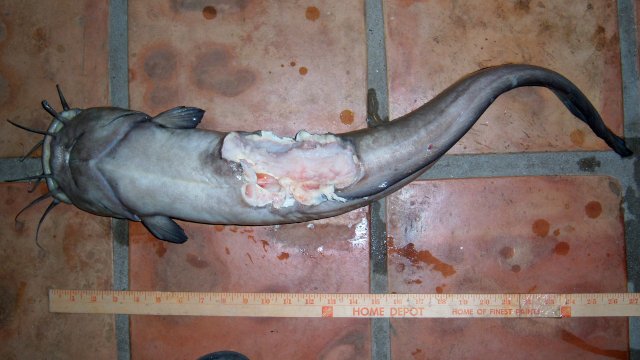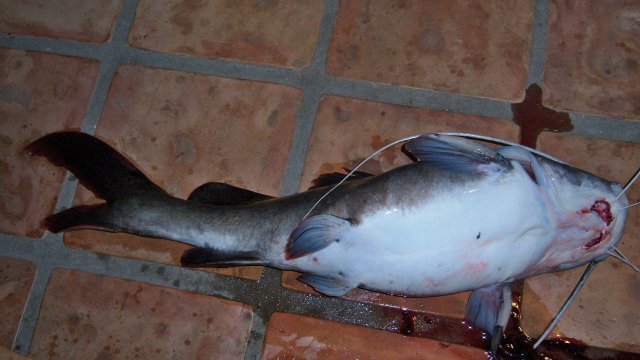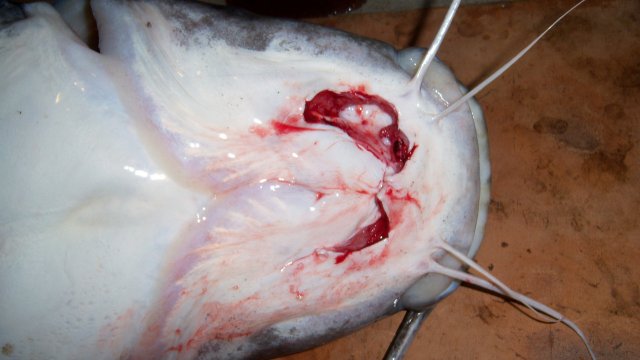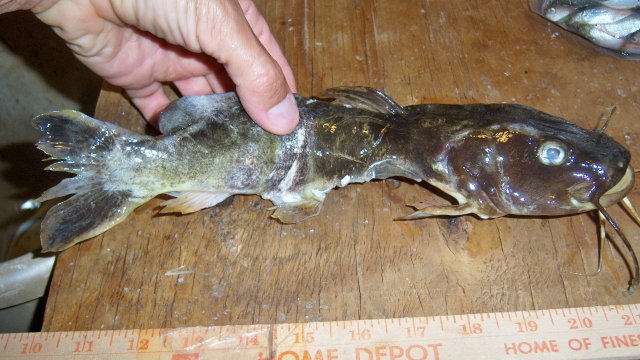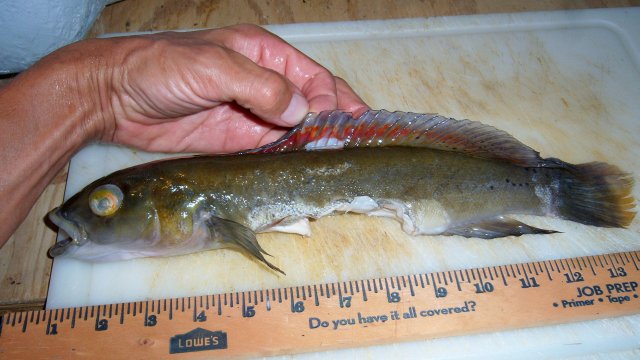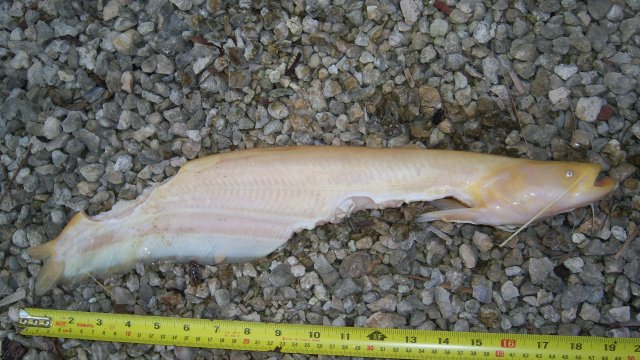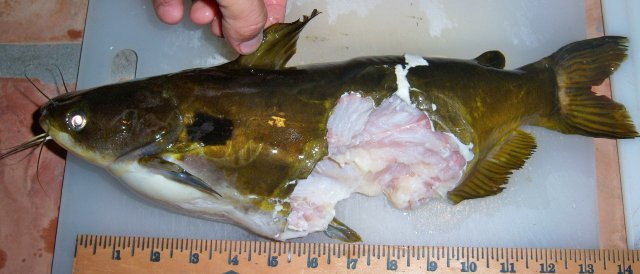I think so. The bites are very clean. There is no evidence of tearing off, yanking or shredding or shaking side to side or death-rolling but with each bite a mouthful of flesh is removed cleanly. They just keep coming back to take new bites out of where they started because it is the easiest as the hide is the hardest to penetrate and partition. On the right side they kept doing that until the backbone stopped them. They bit all the way to uncover several inches of the backbone. The vulture was in deep shock but still alive when I pulled it out.Viktor dumb question but how do you know it was the vartf ? Are they the only ones that could have caused this type of damage ?
The VATF had done it before to other fish I believe, which included sun catfish, bala shark, tinfoil barb, and wels.
What is generally believed about the ATF that they don't go after fish too large to be considered on their menu even in captivity, is not so true in my experience. If they get hungry even a little bit, they don't hesitate to attack fish of equal or a bit greater size. So far. If a tank mate is smaller and not armored like a pleco or as fast as a dorado or as aggressive as a large cichlid, I think it'll have no chance.


